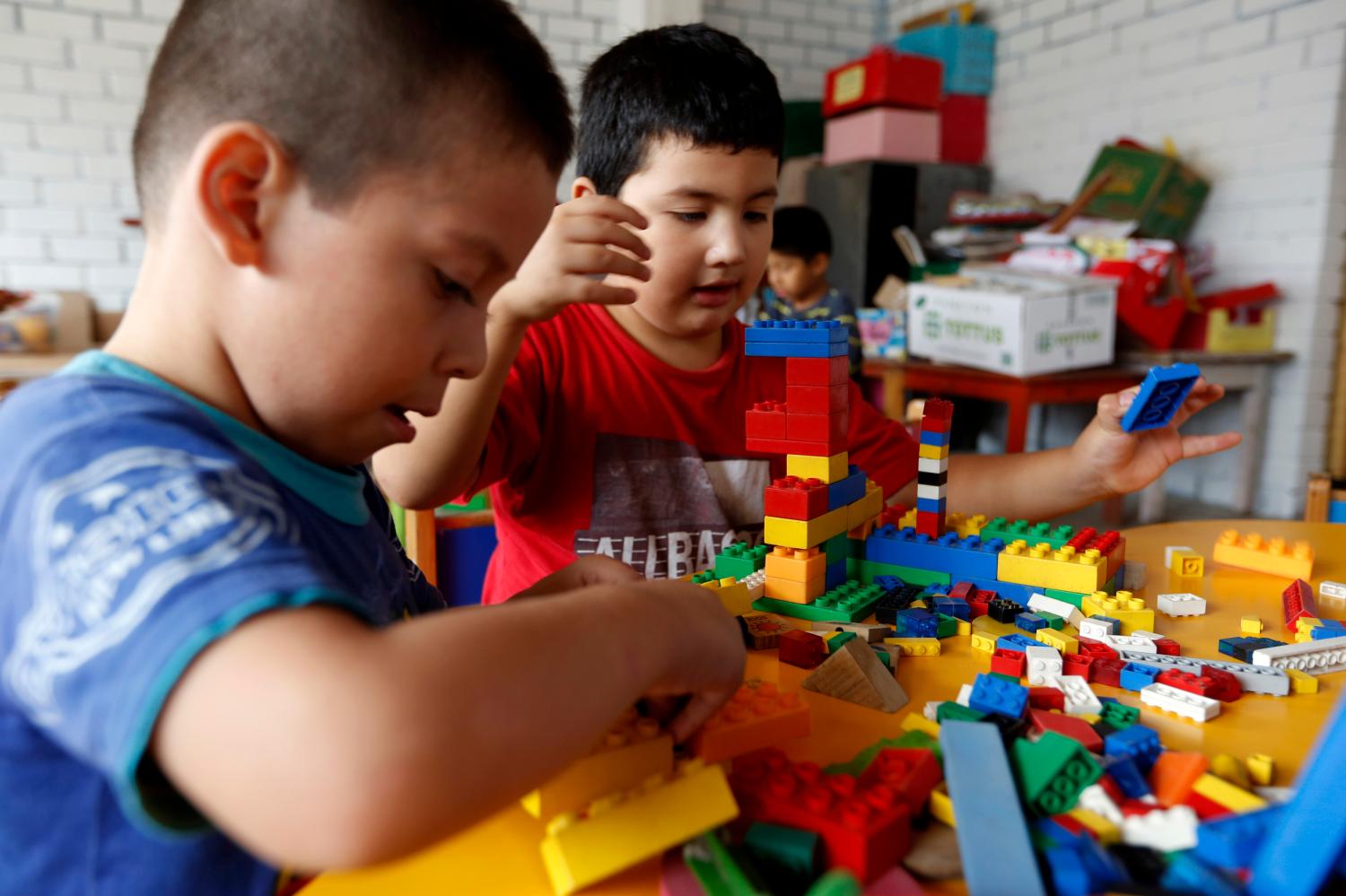Editor’s Note: This blog is one of a series on early childhood development, featuring experts from Brookings and elsewhere that have been discussing the topic as part of work being conducted by the Center for Universal Education.
Para leerlo en español, visite
Primeros Pasos
.
The science of child development tells us that, for early childhood interventions, what matters is “process quality.” Process quality is not concerned with the quality of the facilities where children are given care, or the types of university degrees that their caregivers have. Rather, process quality focuses on how interactions occur in the caregiving setting, and on how curriculum is implemented. Multiple studies show that for children, a rich learning environment is one where they experience interactions that are responsive, warm, sensitive to their perspectives, and plentiful in language. The quality of interactions in the caregiving setting plays a crucial role in allowing young children to explore, learn, and ultimately to reach their potential.
Although this seems quite intuitive, parents often may not be thinking of these factors as the guiding criteria when selecting a childcare center. Instead, parents might favor convenience—for example, being located on a parent’s commute—when they know less about how to assess the process aspects of quality and how important it is for their young children. Even worse, in many places of the world, process quality is not even a major consideration when policymakers make decisions on the funding of public childcare or preschool programs.
Factors Influencing Quality and the Trade-Off between ECD Outcomes and Costs
Early childhood programs that have been shown to have the largest, long-term impacts are also characterized by being of very high quality. That is where the trade-off idea comes from: as you try to economize on cost, you probably lower the quality of services provided. So what do we know about this trade-off?
First, while determining the costs of structural aspects of quality—such as infrastructure, salaries, toys and books, and furniture—is very straightforward, little is known about how to estimate the cost of process quality. What inputs need to be priced? And what does it take to transform them into high-quality human interactions?
Second, process quality requires much more than programmatic efforts as it can only be sustainable if there is a system in place. But switching from a programmatic view to a systemic one introduces complexities in thinking about quality and adds to costs. These are a few examples:
- A system is in place when enough qualified human resources to staff the different programs and services are generated every year.
- A system is in place when staff is compensated competitively and attractively enough, so that they can grow professionally over time.
- A system is in place when performance and pay are linked to in-service training opportunities, coaching, and mentoring, so early childhood development professionals remain in the field and advance in their careers.
- A system is in place when data is generated and published with frequency and when quality is monitored, child outcomes are tracked so that families, program coordinators, and policy makers can make the best, informed decisions for the well-being of young children.
- A system is in place where there are quality standards, and providers meet them, and families have access to this information in choosing a caregiving setting for their young children.
The third and most important point is that quality is a must—a non-negotiable element of early childhood programs. Therefore, my own personal takeaway is that when thinking about child outcomes, quality, and costs, the trade-off for policymakers should not really be between investing more or less for higher or lower quality programs. If we do not invest more today and do so wisely to build strong foundations for young children, we risk forgoing the gains that can be realized through healthier, more productive, and better citizens in the future.
The Brookings Institution is committed to quality, independence, and impact.
We are supported by a diverse array of funders. In line with our values and policies, each Brookings publication represents the sole views of its author(s).





Commentary
Early Childhood Development: Three Things Experts Agree on about Outcomes, Quality, and Costs
February 2, 2015